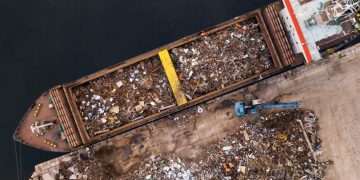BIMCO analysis

According to BIMCO, China’s steel exports are not enough to support the freight market as you will need lower Chinese iron ore production too in order to keep growing imports of iron ore into China that will support the dry bulk freight market.
World Crude steel production for the first seven months of 2015 was 945.8 million tons, down 2.1% on the same period last year, according to World Steel Association.
As China accounts for 50% of the world’s crude steel production it’s fair to highlight the specific development in China as well as in the rest of the world separately.
In dry bulk shipping, all eyes are on China as 960 million tons (MT) out of a total 1,425 MT of seaborne iron ore exports is expected to be landed there in 2015.
Fortunately for shipping, China is faring slightly better than the rest of the steel producing nations combined. From January to July this year, China produced 476 MT against 485 MT last year, a decrease of 1.8%. Meanwhile production in rest of the world was 470 MT against 482 MT last year, a decrease of 2.5%.
Chief Shipping Analyst at BIMCO, Peter Sand, says: “China is heading for its first annual decline in crude steel production since 1981. This is painful for dry bulk shipowners and operators, as iron ore imports into China is the key market driver.
Fortunately we are finally seeing Chinese steel mills substitute domestically mined ore of low quality for high quality imports. This has buoyed imports, which are on par with last year for the first seven months of 2015 while domestic production is down by 10.1% during the same period.
As we may have seen steel production in China at its peak in 2014, the big questions is: will China keep up steel exports equal to the steel production in Japan going forward or will Chinese steel production decline with lower domestic consumption from now on?“.
Chinese steel exports rose strongly throughout 2014, growing 51% on 2013 to reach 94 MT. In December 2014 and January 2015 more than 10 MT was exported. 2015 has kept building on the strength of 2014, benefiting the Supramax market in the Far East.
Currently, industrial production close to Beijing is somewhat restricted as the capital hosts the 2015 World Championships in Athletics from 22-30 August and the celebrations marking the end of World War II on 3 September. This is done to ensure blue skies during the event.
“The second half of the year is the seasonally strongest for global seaborne iron ore transportation. BIMCO therefore maintain expectations for a positive growth level, but revise it somewhat down to 2.8% on the back of weakness in first half of the year.
Achieving this level hinges on China maintaining is steel exports level as well as continues substituting domestically mined ore for imports“, adds Peter Sand.
Source & Image Credit: BIMCO






























































